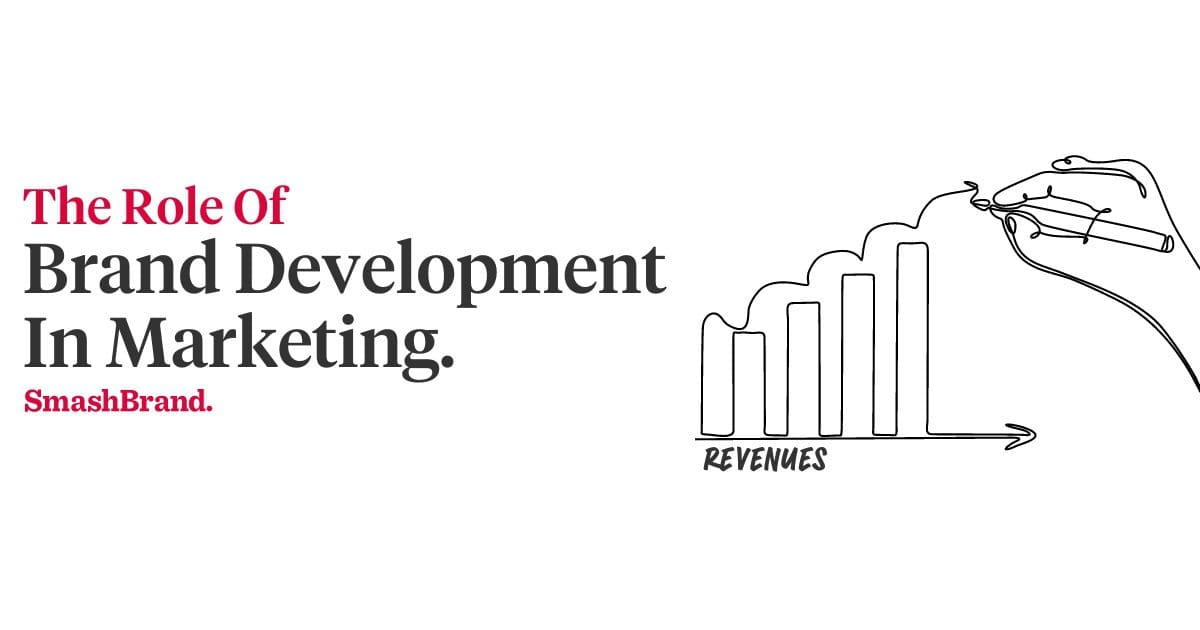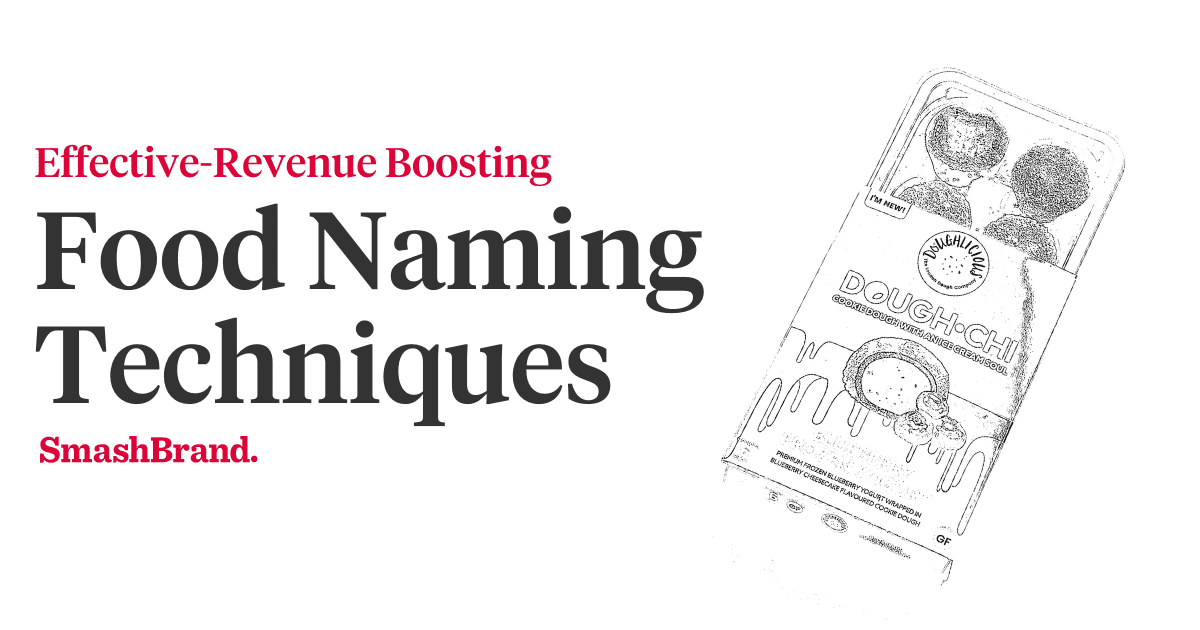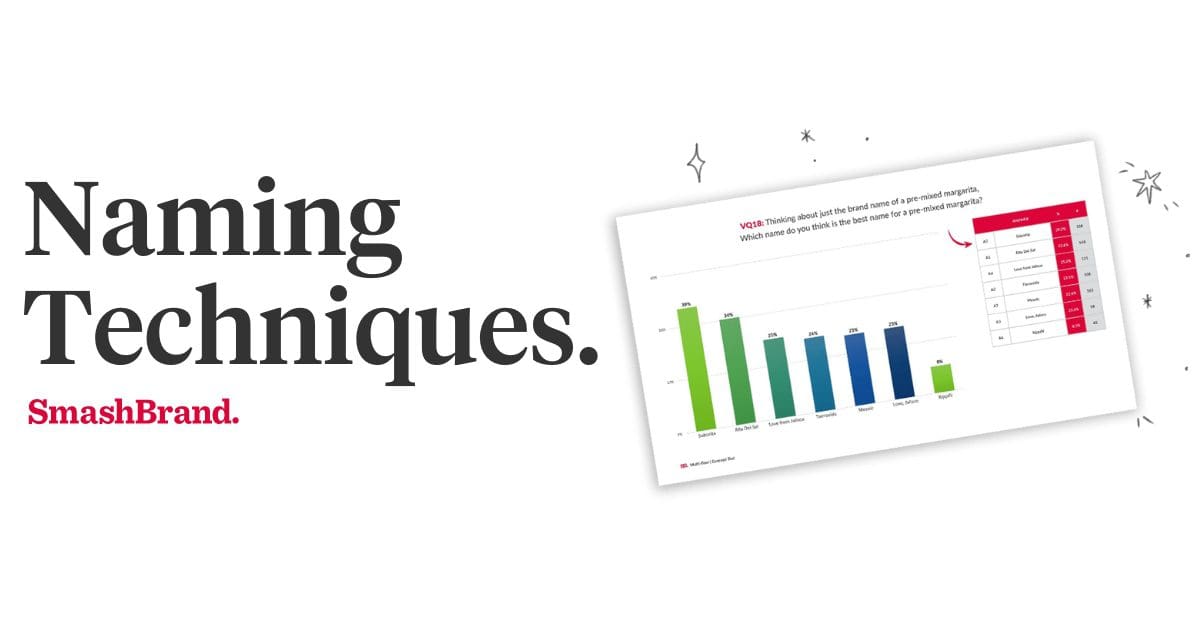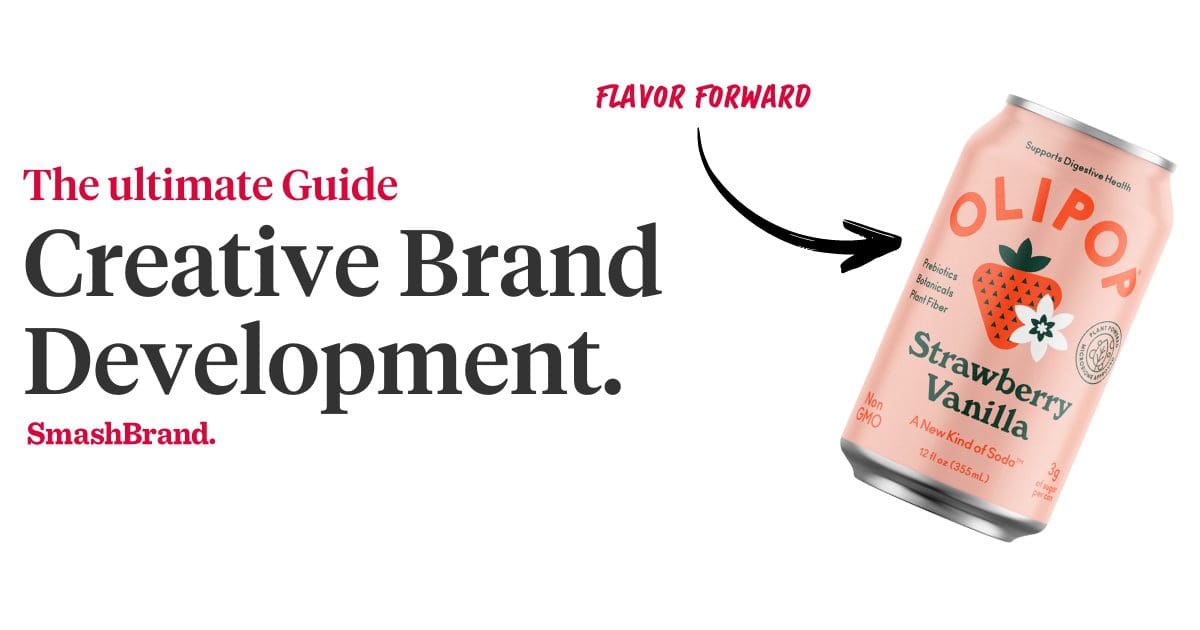Are you harnessing the transformative power of brand development in marketing to set your business apart? If not, you are missing a lot on the table. In today’s fiercely competitive landscape, understanding and implementing robust brand development is not just an option—it’s the oxygen for any company looking to thrive.
As a brand development agency, we’ve witnessed the seismic impact a carefully crafted brand can have on a company’s success. It is the cornerstone of the marketing strategy, the heartbeat of the corporate identity, and the silent ambassador that communicates the value proposition to the world.
This article explores the role of brand development and reveals how integrated brand development in marketing can propel your business to unprecedented heights. You will learn how to develop an effective brand strategy and fine-tune your brand identity and positioning according to the market needs.
The Concept of Brand Development in Marketing
Brand Development is developing and strengthening your brand from the ground. It’s a strategic approach that defines the brand’s core values, messaging, and experience it wants to deliver to its customers. A well-crafted brand development strategy is not just about creating a catchy logo and tagline; it’s about carving out a unique and long-lasting identity in the marketplace.
An effective brand development strategy consists of the following essential building blocks:
- Brand Purpose: The core reason for the company’s existence, reflecting its mission and values
- Brand Identity: How the brand wants to be perceived, including visual elements like logos, color schemes, and design features
- Brand Positioning: Establishing a distinctive place in the market and differentiating the brand from competitors
- Brand Voice: The tone, style, and personality of the brand’s communication with its audience
- Brand Presence: How the brand is visible and connects with the audience both online and offline, including website presence and social media engagement
- Brand Values: The underlying principles and beliefs that the company upholds, making it relatable to consumers
- Brand Promise: The unique value proposition offered to the target audience, including mission statements and long-term goals
Importance of a Strong Brand in Marketing
Developing a solid brand identity can significantly reduce marketing efforts by up to 50%. A strong brand can leverage consumer perceptions, reach more audiences, and attract potential customers. A solid brand is easily recognizable, making it more likely for customers to remember the brand and its products. It builds customer trust and loyalty, leading to repeat purchases and long-term relationships.
Companies with solid brand recognition can command premium prices, as customers will pay more for a trusted and well-known brand. It, in turn, turns customers into loyal brand ambassadors, recommending the brand to others, which boosts word-of-mouth marketing.
Businesses with a solid brand development strategy gain brand equity over time. It helps as a guiding light in the market, helping customers find the products and services they need. It sets itself apart from competitors, drives customer decisions, and determines market success.
Crafting a Compelling Brand Strategy
Developing an effective marketing strategy can be a complicated task. It requires proper planning, resources, and time allocation. A compelling brand strategy can reduce the efforts and increase the chances of marketing success and long-term business growth.
A well-defined brand strategy helps increase returns on marketing dollars and sales efforts, increases customer loyalty, and promotes customer engagement. Here are the steps to crafting a compelling brand development strategy for marketing.
Defining the Target Audience
Defining the target audience is the cornerstone of a successful brand strategy. It serves as the foundation upon which all other branding efforts are built. It is the first and most critical step that guides all stages of brand development. Without having a clear understanding of who the brand is intended to reach, even the most creative brand development examples may fail to make an impact.
Companies must conduct thorough market research. During this stage, they must learn their potential customer group. They must know what they need, what they value, and how they make their purchasing decisions. A data-driven approach guarantees success.
After gathering helpful information about the target audience, the next stage is building detailed buyer personas. These are semi-fictional characters based on helpful, accurate data and insights about the target audience. It allows to personify the brand’s ideal customers to be personified, making it easier for businesses to tailor their messaging, design, and overall brand strategy.
Developing a Unique Value Proposition
A Unique Value Proposition (UVP) is a differentiator in the competitive landscape. It articulates the distinct benefits and value a brand promises to deliver to its customers, which is crucial for brand building and growth. It is necessary for new brand development because it can distinguish between a brand that thrives and one that struggles to gain traction.
A strong UVP addresses the target market’s specific needs and pain points of the target market in a way that competitors do not, delivering a clear message as to why the consumer should choose one brand over another. Companies must include it in every brand’s messaging and positioning aspect. Consistently reinforcing a brand’s unique value proposition (UVP) helps establish its identity and build a loyal customer base.
Consistency in Brand Messaging
Consistency in brand messaging is the heart of solid brand marketing, particularly during product brand development. Maintaining a uniform brand voice, tone, and visual elements across all marketing channels helps build trust and loyalty. It strengthens the brand positioning and aids in the growth of the brand development index.
A strategic brand development process ensures customers receive the same core message no matter how they encounter the brand. During this stage, companies may face several challenges. One of the main issues is ensuring that all internal teams and external partners understand the brand guidelines. Failing to keep everyone on the same page harms the brand’s message and leads to ambiguities.
Aligning Brand Purpose and Business Goals
Once a company learns about its target audience, it must start working on aligning its brand purpose and business goals. This step ensures that every aspect of the marketing strategy is infused with intention and direction. The brand purpose is the driving force behind the brand’s existence beyond making a profit.
Brand purpose underpins the entire brand strategy as it guides all business activities. It informs product development, customer service, marketing campaigns, and corporate culture. For instance, General Mills produces natural and healthy foods that people love. The company generated $18.99 billion in revenue in 2022.
When brand purpose and business goals are in sync, they create brand alignment, which is the harmony between what the company stands for and how it operates.
Brand Marketing Essentials
Only brand building is not enough. Companies must know different tactics to increase the reach of their newly established brand and develop a firm brand awareness. The following are some effective brand marketing strategies that most companies leverage to reach new audiences:
Utilizing Digital Marketing Channels
Having an online presence is a must for all businesses. Companies must leverage the power of digital marketing channels for brand marketing to increase their growth. These channels allow them to develop a solid brand identity in a highly targeted and measurable way.
Social Media Branding Strategy
Social media platforms offer brands a unique opportunity to create and share content that resonates with audiences. Developing a robust social media branding strategy involves:
- Identifying the right platforms where your target audience is most active.
- Creating and sharing content that aligns with your brand voice and identity.
- Engaging with followers through comments, messages, and social listening.
- Utilizing influencer partnerships to expand reach and credibility.
- Monitoring and adapting to platform-specific algorithm changes that affect content visibility.
Content Marketing
Content marketing focuses on creating relevant content to attract and retain a clearly defined audience. Tactics include:
- Blogging with SEO-rich content to improve organic search visibility.
- Video marketing to engage users and provide visual storytelling.
- Infographics and other visual content that are shareable and informative.
- Whitepapers and e-books that provide in-depth insights into industry topics.
- Consistently delivering quality content that establishes thought leadership and brand authority.
Email Marketing
Email marketing remains one of the most effective digital marketing channels for direct communication with potential and existing customers. Key tactics involve:
- Building a subscriber list with opt-in campaigns that promise value.
- Segmenting the email list to deliver personalized and relevant content.
- Designing responsive email templates that are mobile-friendly.
- A/B testing subject lines, content, and calls to action to optimize engagement.
- Regularly analyzing email campaign performance to refine strategies.
Challenges in Digital Marketing
While digital marketing offers numerous opportunities for brand growth, it also presents challenges, such as:
- Google Search Algorithm Updates: Google frequently updates its search algorithms to provide the best user experience. Brands must stay informed and adapt their SEO strategies to maintain or improve search rankings.
- Platform Dependency: Brands risk overly dependent on platforms (like Facebook or Instagram) that can change rules, algorithms, or monetization strategies, impacting brand visibility and engagement.
- Data Privacy Regulations: With regulations like GDPR and CCPA, brands must navigate the complexities of data collection and privacy, potentially impacting targeting and personalization efforts.
- Content Saturation: As more brands invest in digital marketing, the competition for user attention intensifies. Standing out in a crowded digital space requires high-quality, unique content that provides value to the audience.
- Evolving Consumer Behaviors: Digital marketing strategies must evolve to keep up with changing consumer behaviors and preferences, such as the shift towards mobile browsing and the expectation for instant communication.
Brand Management and Expansion
Brand management and expansion are critical stages in the lifecycle of a brand. As a company expands, it becomes increasingly important to carefully manage its brand to maintain its identity, ensure consistency, and seize new opportunities. The fast-paced technological advancements have led to significant market shifts in almost every industry in the past decade.
With the increasing use of AI to solve problems, autonomous vehicles, and growing concerns about the environment and personal health, brands need to adapt and stay relevant.
Maintaining Brand Equity and Loyalty
Maintaining brand equity and loyalty are the essential steps for long-term success. Companies must develop consistent brand messaging across all platforms. These include advertising platforms like Google and social media, product packaging, customer service, etc. It reinforces a cohesive brand voice and identity.
Companies can maintain their brand equity by constantly providing high-quality products and services. Innovative product packaging and advertisements keep the brand relevant and competitive. Remember, those who don’t embrace technology become history, and there are hundreds of examples to learn from.
Fostering Brand Loyalty
Companies must implement different strategies to foster brand loyalty. They may introduce different reward programs to encourage ongoing patronage. These might be discounts, exclusive offers, or early access to new products.
Businesses may also create communities around their brands that foster customers’ sense of belonging. Engaging with customers through social media, events, and other interactive platforms can strengthen emotional connections to the brand.
Providing exceptional customer experiences at every point of interaction can turn satisfied customers into loyal advocates. It includes after-sales service, handling customer complaints effectively, and exceeding customer expectations.
Ensuring Customer Loyalty
Personalizing communications and offers to meet customers’ needs and preferences can enhance loyalty. It could be through targeted marketing, personalized online experiences, or tailored product recommendations.
Trust is a fundamental component of customer loyalty. Brands can build trust by being transparent, ethical, and consistent in their actions and communications. Actively seeking out and acting on customer feedback demonstrates a brand’s commitment to its customers and can lead to improvements in products and services that reinforce loyalty.
Regular and consistent communication with customers keeps the brand top of mind and can reinforce the positive attributes associated with the brand. It includes email marketing, social media engagement, and content marketing to provide value beyond the product or service.
Exploring Brand Extension Opportunities
Imagine a brand as a tree, deeply rooted in its core values, with branches reaching out into new territories; this is the essence of brand growth. To embark on this adventure, a company must first tap into the reservoir of trust and recognition it has cultivated over time. This brand equity is the launchpad from which new products can take flight.
While moving toward brand extension, a company must be cautious. Imagine a brand known for its rugged outdoor gear venturing into the travel experiences; it’s a natural progression that feels like the brand is fulfilling its destiny.
Armani, a luxury fashion brand, expanded into various unrelated sectors such as beauty, hospitality, fragrances, makeup, floral arrangements, and chocolates, demonstrating the company’s ability to establish dominance in different markets while leveraging its brand name.
Managing Multiple Brands and Brand Architecture
Brand architecture is the blueprint that defines the roles and relationships between the parent brand and its subsidiaries or product lines. The strategic framework ensures each brand resonates with its intended audience without creating dissonance within the portfolio.
When orchestrated correctly, it allows consumers to easily navigate the brand family, understanding each brand’s distinct value proposition. When managing multiple brands, it is crucial to balance leveraging the portfolio’s collective strength and preserving each brand’s unique identity.
It involves carefully analyzing market segments and ensuring that each brand serves a specific purpose, targets a particular demographic, or fulfills a distinct need. The goal is to cover the entire market spectrum without causing overlap that could lead to internal competition or consumer confusion.
Measuring Brand Success
After implementing the brand development strategy, tracking and measuring the performance is necessary. It is essential in marketing as it provides valuable insights into the effectiveness of branding efforts. Tracking customer engagement indicators like social media interactions and website dwell time helps evaluate the brand’s ability to connect with consumers on a deeper level.
These comprehensive measurements enable companies to make informed decisions, optimize strategies, and enhance their brand’s impact on consumers and business outcomes.
Tracking Brand Performance and Growth
Companies can leverage key performance indicators to track the success of their implemented strategy and brand growth. These include:
| KPI | Description |
| Brand Awareness | Measure recognition and reputation through metrics like brand mentions, share of voice, and media impressions. |
| Brand Engagement | Track consumer interaction with your brand across various platforms, such as social media and website activity. |
| Brand Consistency | Monitor brand guidelines usage and adherence to ensure consistent messaging and visual presentation. |
| Brand Loyalty | Measure customer retention rate, which indicates the number of customers who remain with your product or service over time. |
| Customer Satisfaction | Assess how satisfied customers are with their experiences, which can be measured through surveys or feedback. |
| Net Promoter Score (NPS) | A score between -100 and +100 compares the percentage of detractors to promoters, indicating customer loyalty and advocacy |
| Customer Effort Score (CES) | A score that measures how much effort was required for the customer to use the product or service, indicating ease of use and satisfaction. |
| Sentiment Analysis | A percentage score derived from social listening that compares favorable conversations about a brand to unfavorable ones, indicating public perception. |
| Net Trust Score | A score that measures how trustworthy customers find a particular brand, indicating credibility and reliability. |
| Financial Performance | Monitor revenue growth, profit margins, and return on investment to assess the overall impact of branding initiatives on business results |
Data-Driven Brand Development
Are you interested in building your company into a full-fledged established brand? Do you want to increase your sales and make your marketing campaigns more efficient? SmashBrand is a brand development agency for businesses that want to see a performance lift in retail.
Our PathToPerformance™ process guarantees a brand performance lift on retail shelves. From strategy to design, we take consumer brands through a successful brand development process, setting them up for long-term success. Book a time to discuss your project with our team.






